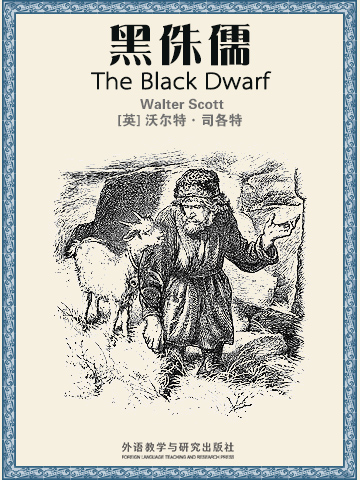当去除了带有装饰感的外表和修辞,真相赤裸的摊开在眼前,也许是丑陋的和不堪的,却带有沉重的生命的存在感,这种存在感并不因为弱小和容易被忽视而消失,反而因为去除了表象和具有某种独立的尊严感而变的愈发强大。真实性本身便具有绝对的残酷感,就像黑侏儒这个词所传达出来的信息,迫使人直视生命的真相。她们在各自的情绪中找到了相关的映射,这些情绪复杂、深邃、幽暗不清,并且被发散出各自不同的语境与指涉。 此书的主要人物是基于作者在1797年秋遇到的大卫·里奇。故事中的侏儒叫做爱德华·毛利,当地人认为他是和魔鬼结盟的隐士。毛利卷入了一场复杂的爱情,复仇和背叛以及一场收到威胁的婚姻的故事。评论家认为这本书里缺少了常有的搭配 “旧道德”,司各特本人在《季刊评论》中匿名写了一篇更加严厉的评论指出自己的看法:他自己和自己的故事在做斗争,最终得出了一个结论。
此书的主要人物是基于作者在1797年秋遇到的大卫·里奇。故事中的侏儒叫做爱德华·毛利,当地人认为他是和魔鬼结盟的隐士。毛利卷入了一场复杂的爱情,复仇和背叛以及一场收到威胁的婚姻的故事。评论家认为这本书里缺少了常有的搭配 “旧道德”,司各特本人在《季刊评论》中匿名写了一篇更加严厉的评论指出自己的看法:他自己和自己的故事在做斗争,最终得出了一个结论。
The main character is based on David Ritchie, whom Scott met in the autumn of 1797. In the tale, the dwarf is Sir Edward Mauley, a hermit regarded by the locals as being in league with the Devil, who becomes embroiled in a complex tale of love, revenge, betrayal, Jacobite schemes and a threatened forced marriage.
Scott began the novel well, "but tired of the ground I had trode so often before... I quarrelled with my story, bungled up a conclusion."
Critics and public found it poor in comparison with its popular companion Old Mortality. One of the harshest reviews was in the Quarterly Review, written anonymously by Scott himself.
- TALES OF MY LANDLORD
- II.INTRODUCTION
- CHAPTER I
- CHAPTER II
- CHAPTER III
- CHAPTER IV
- CHAPTER V
- CHAPTER VI
- CHAPTER VII
- CHAPTER VIII
- CHAPTER IX
- CHAPTER X
- CHAPTER XI
- CHAPTER XII
- CHAPTER XIII
- CHAPTER XIV
- CHAPTER XV
- CHAPTER XVI
- CHAPTER XVII
- CHAPTER XVIII
- 书评 写书评
- 笔记
-
书评加载中...























 京公网安备 11010802032529号
京公网安备 11010802032529号
笔记加载中...